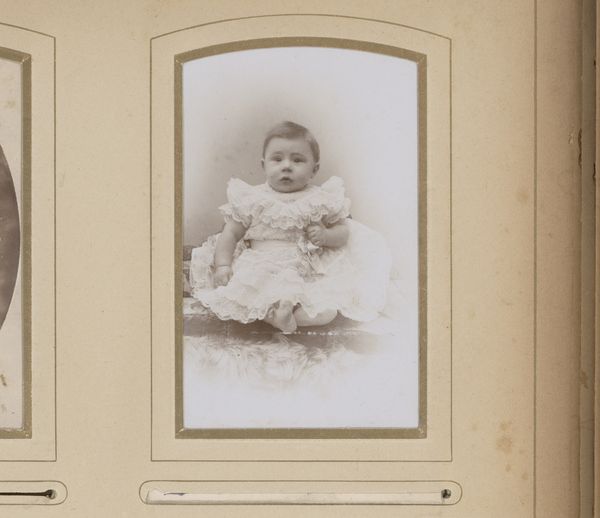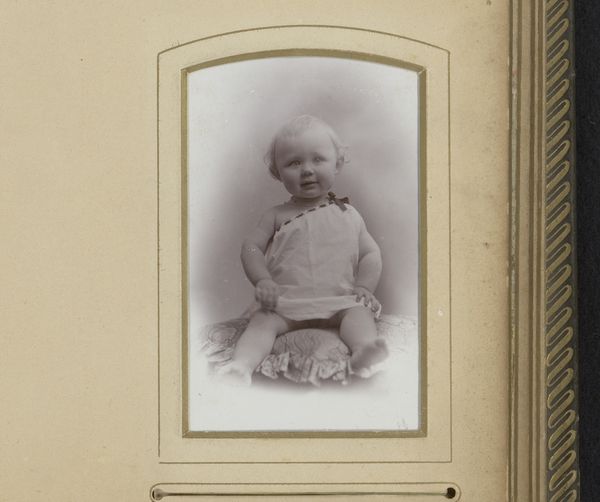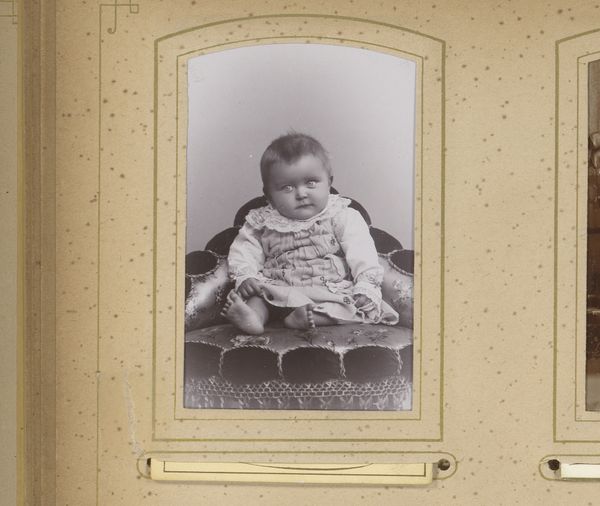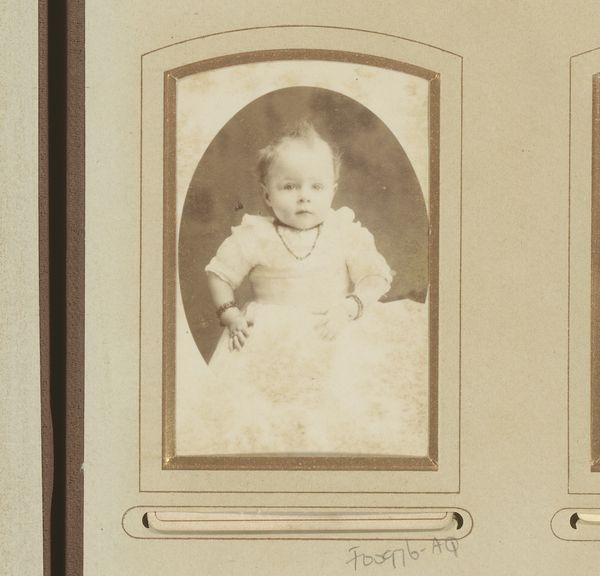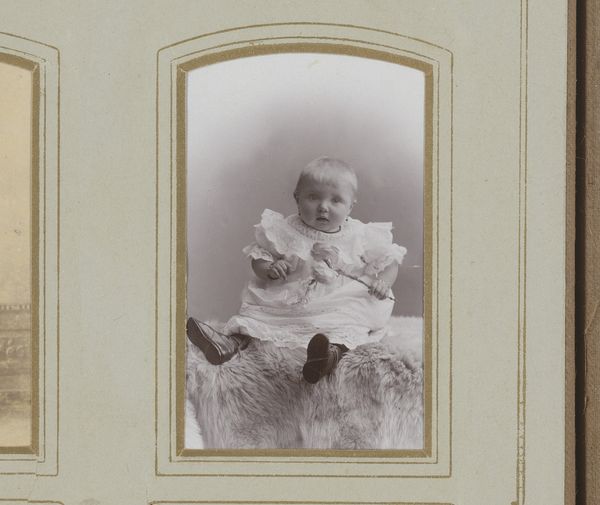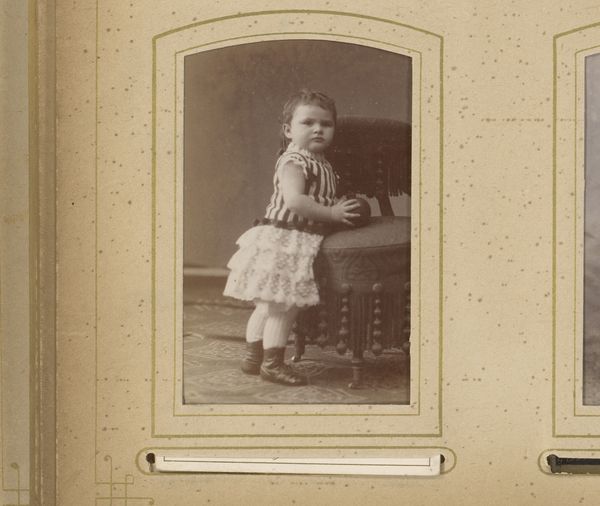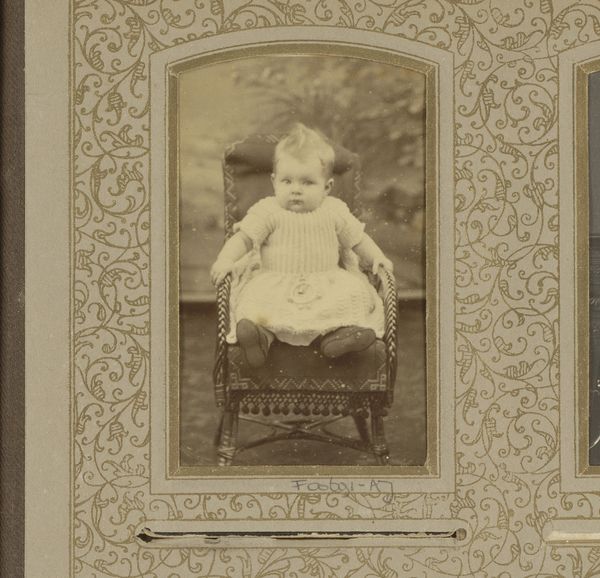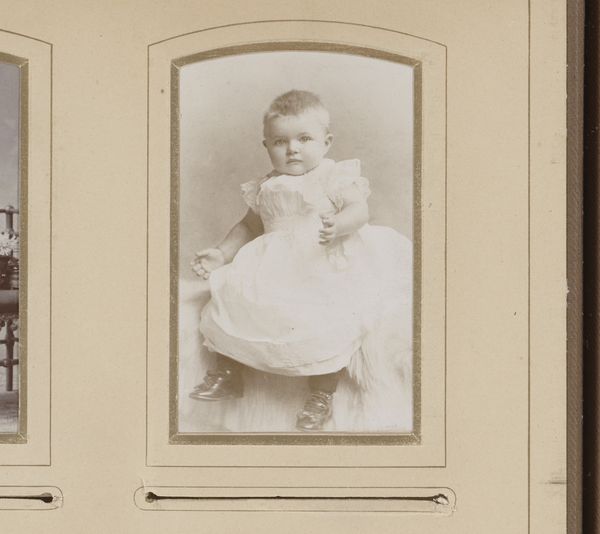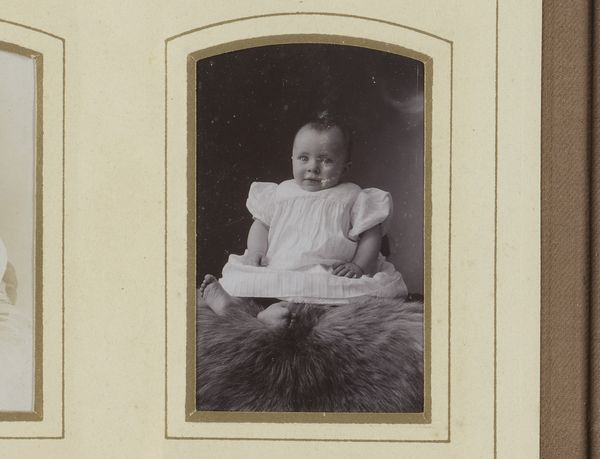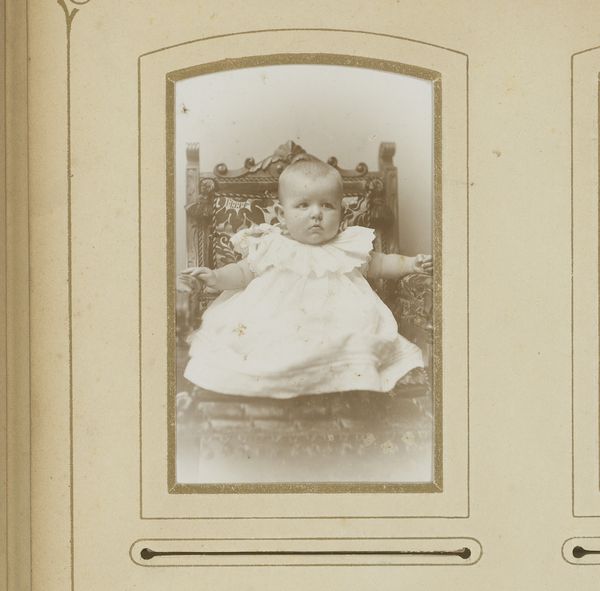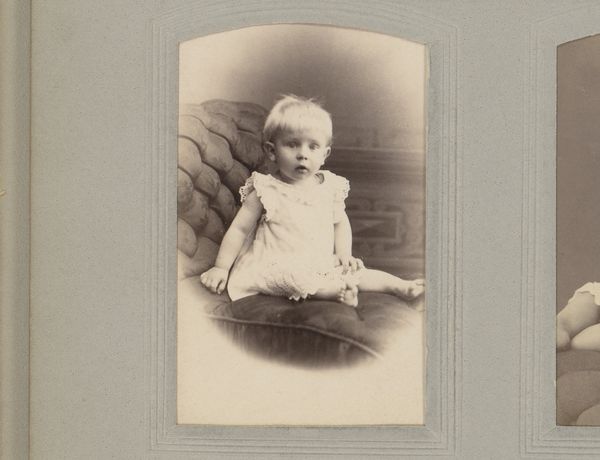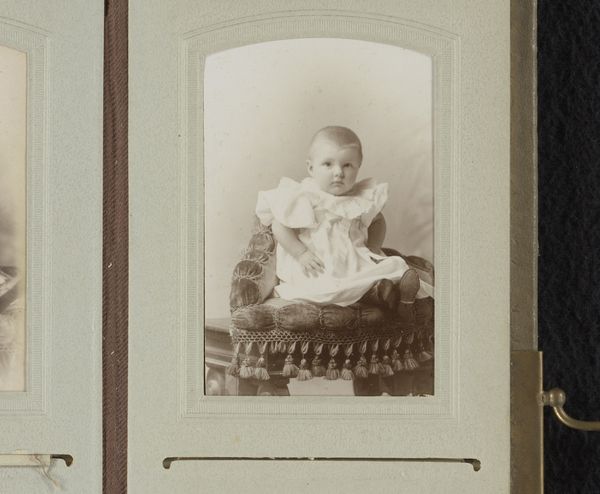
#
simple decoration style
#
wedding photograph
#
muted colour palette
#
photo restoration
#
photo element
#
archive photography
#
historical photography
#
19th century
#
photographic element
#
photo library
Dimensions: height 84 mm, width 51 mm
Copyright: Rijks Museum: Open Domain
Editor: This is "Portret van een zittende peuter" by Machiel Hendricus Laddé, dated sometime between 1892 and 1906. It's currently at the Rijksmuseum. It strikes me as a very formal portrait, but there's something about the baby's expression that feels a little melancholic, maybe even defiant. What do you see in this piece? Curator: It's fascinating how this seemingly simple portrait invites such complex interpretations. The formality, as you pointed out, is typical of late 19th-century photography, reflecting societal values of decorum and the importance of family legacy. But look closer - the child isn't posed in an idealized, cherubic way, are they? The slight frown, the almost challenging gaze… Do you think that challenges conventional expectations for portraits of children during this period? Editor: Definitely! It's like the photographer captured a moment of genuine emotion, not just a posed smile. So, is the child's expression a kind of silent rebellion against those strict social norms? Curator: Perhaps. Or maybe it speaks to the complexities of childhood itself, which is rarely as innocent and carefree as we often assume. We need to consider how gender and class dynamics might influence such portraits, the pressure of respectability impacting even the youngest members of society. How does that influence your read? Editor: It definitely adds another layer. I guess I initially focused on the individual child, but thinking about those wider social forces makes the image so much richer, sadder even. I hadn't thought about that rebellion applying to childhood itself. Curator: Exactly. It’s not just about aesthetic beauty or technical skill. It is about prompting conversations about how identity, particularly for marginalized groups like children at the time, are constructed and performed. This piece provides a nuanced view of that. Editor: It's incredible how much can be unpacked from a single image. I'll never look at old photos the same way again! Curator: And hopefully you’ll now actively look for similar ways to question historical and contemporary portraits. It can be uncomfortable, but growth in understanding requires some struggle.
Comments
No comments
Be the first to comment and join the conversation on the ultimate creative platform.

